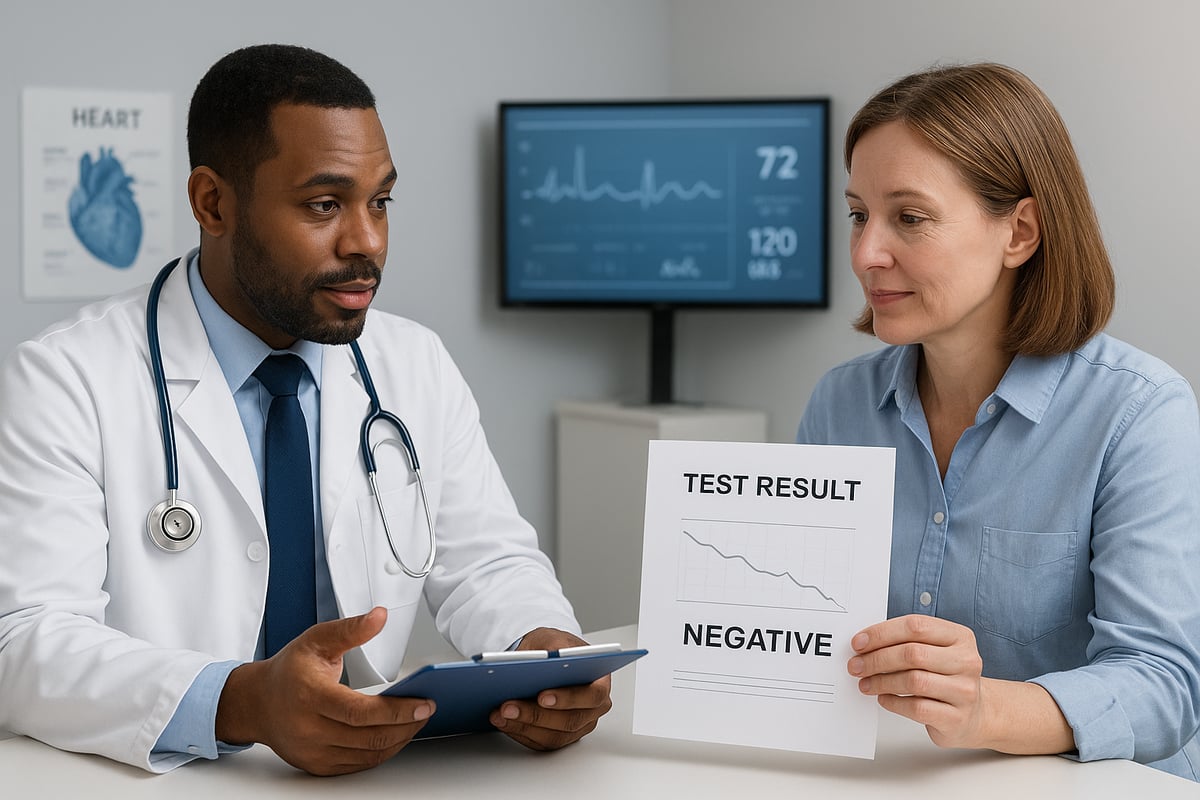In 2025, medical breakthroughs are happening at a pace few could have imagined. For patients and professionals alike, the difference between treat and cure can shape decisions, outcomes, and even hope itself.
Often, people use these terms interchangeably, but the truth is, treat and cure mean very different things. This distinction can affect treatment choices, set expectations, and influence long-term health planning.
Understanding what sets treat and cure apart is more important than ever. In this article, you will discover how these concepts are defined, why the difference matters, and what new developments in medicine may bring for both terms in the coming year.
Defining “Treat” and “Cure” in Modern Medicine
Understanding the difference between "treat and cure" has never been more important in 2025. As patients and healthcare professionals make critical choices, the way we define these terms shapes expectations and outcomes. Let us explore what each truly means in the context of modern medicine.

The Medical Definition of “Treatment”
In modern medicine, "treat and cure" are not interchangeable. Treatment refers to the ongoing management of a disease, focusing on controlling symptoms or slowing progression rather than eliminating the underlying cause.
Common examples of treatment include:
- Insulin therapy for diabetes
- Medications for hypertension
- Eye drops for glaucoma
These interventions improve quality of life but rarely resolve the root cause. Treatments may be pharmacological, surgical, lifestyle-based, or supportive, depending on the disease and patient needs.
According to the CDC, over 60% of chronic disease patients rely on ongoing treatments. Treatment plans are highly personalized, changing with the stage of illness and the patient's response. For many, treatment is a lifelong journey, and understanding the difference between treat and cure helps set realistic goals.
For a detailed comparison, you can refer to Defining Cure and Treatment.
The Medical Definition of “Cure”
A cure means the complete and permanent resolution of a disease. When we talk about "treat and cure," a cure implies that the disease has been eradicated from the body, with no signs or symptoms over a set period.
Examples of cures include:
- Bacterial infections eliminated with antibiotics
- Certain cancers declared cured after years of remission
Medical professionals use strict criteria before declaring a cure, often requiring a defined period without recurrence. Unfortunately, less than 10% of all known diseases have a definitive cure, according to the WHO (2024).
The term "cure" is used with caution, especially for chronic or degenerative diseases where relapse is possible. Achieving a cure can transform not only individual lives but also public health at large. Recognizing the line between treat and cure is crucial for making informed decisions in care.
Why the Distinction Matters to Patients
Knowing the difference between treat and cure has a profound impact on patients. It shapes expectations, guides treatment choices, and influences emotional well-being.
Patients facing chronic diseases must understand if their therapy is aimed at symptom control or complete resolution. Misunderstanding these terms can lead to false hope or disappointment.
There are also practical implications. Insurance coverage, legal definitions, and clinical follow-up all depend on whether a disease is labeled as treated or cured. For example, cancer patients in remission may still require ongoing monitoring, while those declared cured have a different follow-up plan.
Clear communication about treat and cure builds trust and encourages compliance. According to Lindus Health, 72% of patients want clarity on their prognosis, highlighting the need for transparent dialogue in healthcare.
How Treatments and Cures Work: Mechanisms and Approaches
Understanding how medical interventions work is at the heart of the ongoing debate between treat and cure. Each approach has distinct goals, methods, and implications for patient care. Let’s explore the mechanisms that define both strategies, and see why the difference matters in modern medicine.

Mechanisms of Treatment
The primary goal of treatment is to manage symptoms, improve quality of life, and slow disease progression. Treatments are often ongoing, especially for chronic conditions. They can include:
- Pharmacological therapies, such as insulin for diabetes or eye drops for glaucoma.
- Surgical interventions to relieve symptoms or prevent complications.
- Lifestyle modifications, like diet and exercise, tailored to each patient.
- Supportive care to address pain, inflammation, or mobility issues.
Many conditions, such as HIV, are now considered manageable thanks to advances like antiretroviral therapy. In fact, 90% of HIV patients maintain undetectable viral loads with consistent treatment. Innovations such as digital health tools and personalized medicine are reshaping how we treat and cure diseases.
Treatment plans are highly individualized, adapting as a patient’s needs evolve. If you want to learn more about how treatments work for specific conditions, see this Treatment Effectiveness for Eye Conditions page for a detailed overview.
Mechanisms of Cure
A cure aims for complete and permanent resolution of a disease, eliminating its root cause. This can be achieved through several mechanisms, including:
- Removing the underlying cause, such as using antibiotics to clear bacterial infections.
- Reprogramming the immune system with vaccines or immunotherapies.
- Regenerative medicine, including stem cell therapy or organ transplantation.
Some diseases, like hepatitis C, are now curable in up to 95% of cases using direct-acting antivirals. However, the path to a cure is often complex. Cancer cure rates have improved by 15% in the last decade, yet relapse and resistance remain challenges. Achieving a true cure often requires early diagnosis and highly targeted interventions. The treat and cure distinction is especially important here, as a cure transforms patient outlook and long-term health.
The Role of Chronic and Degenerative Diseases
Many chronic and degenerative diseases, such as Alzheimer’s or macular degeneration, present unique challenges. These conditions result from complex genetic, autoimmune, or degenerative processes that are not fully understood. In most cases, the medical approach is to treat and cure symptoms where possible, but not the root cause.
For example, treatments for macular degeneration can slow vision loss but cannot fully restore sight. According to the WHO, 80% of adult vision loss cases are due to chronic, incurable conditions. As a result, research is shifting toward disease modification and prevention instead of searching for a one-size-fits-all cure.
Patients facing these diagnoses must balance hope for new breakthroughs with realistic expectations. Understanding the difference between treat and cure helps patients make informed decisions and maintain a positive outlook, even when a definitive cure is not yet available.
Why “Cure” Remains Elusive: Challenges and Realities
Despite incredible advances, the gap between treat and cure is still significant for many conditions. Understanding why a cure remains so elusive can help patients and practitioners set realistic expectations and drive innovation forward.

Scientific and Biological Barriers
The path from treat and cure often hits scientific roadblocks. Many diseases, such as cancer and viral infections, are highly heterogeneous, meaning they change and mutate quickly. This makes finding a universal cure nearly impossible.
For chronic and degenerative diseases, the biological processes are even more complex. Genetic and epigenetic factors can help diseases evade cures or cause them to recur after apparent remission. For example, about 30 percent of patients previously declared “cured” of cancer face recurrence within five years, according to NIH data.
Degenerative conditions like Alzheimer’s and retinitis pigmentosa are particularly challenging. Their underlying mechanisms are not fully understood, and ongoing degeneration can outpace current therapies. For an in-depth look at why these diseases often resist cures, see The Degeneration Process Explained.
These barriers highlight why treat and cure approaches must be tailored to each disease’s unique biology.
Table: Why Do Some Diseases Resist Cure?
| Factor | Impact on Treat and Cure |
|---|---|
| Mutation Rate | Increases relapse risk |
| Genetic Complexity | Limits cure effectiveness |
| Disease Heterogeneity | Requires personalized plans |
Clinical and Ethical Considerations
Clinicians are cautious about using the word “cure.” Over-promising results can lead to disappointment, legal challenges, and loss of trust. Medical professionals have an ethical duty to provide transparent, accurate information, especially when it comes to treat and cure outcomes.
Clinical trials present another challenge. Many only follow patients for a short time or involve small sample sizes, making it difficult to confirm a permanent cure. Even when a patient appears cured, ongoing monitoring is usually necessary. For instance, some HIV “cure” cases were later found to be incomplete after further testing.
According to the FDA, only 5 percent of new drugs actually achieve true disease eradication. This data underscores the importance of clear, honest communication and informed consent when discussing treat and cure with patients. As science evolves, so too does the definition of what constitutes a cure, making transparency more crucial than ever.
Societal, Economic, and Regulatory Factors
The journey from treat and cure is also shaped by societal and economic realities. Developing a cure is typically more costly and complex than managing a disease long-term. Pharmaceutical companies may have greater incentives to focus on ongoing treatments rather than single-use cures.
Insurance and reimbursement systems are often built around treatment protocols, which can delay or complicate access to new cures. Regulatory hurdles for labeling a therapy as a cure are significant, especially when long-term outcomes remain uncertain.
For example, the pricing of hepatitis C cures has sparked debate, as a one-time cure can save billions in healthcare costs but is often expensive upfront. The CDC notes that cures have the potential to reshape public health spending, yet policy and industry incentives do not always align.
Public health policy, insurance structures, and regulatory frameworks all influence whether treat and cure innovations reach those who need them most. Navigating these challenges is key for the future of medicine.
Real-World Examples: When Treatments Become Cures (and Vice Versa)
Understanding how the terms treat and cure play out in real life reveals just how much these concepts shape patient journeys. In the clinic, the lines between treatments that manage disease and those that eradicate it can shift, depending on medical advances and individual patient factors. Let us explore key examples that highlight these distinctions and their impact on health outcomes.

Infectious Diseases: From Treatment to Cure
Infectious diseases provide some of the clearest examples of the treat and cure dynamic. For many bacterial infections, antibiotics can completely eradicate the pathogen, transforming a potentially fatal illness into a curable condition. Penicillin’s introduction, for instance, marked a turning point where effective treatment often meant cure.
One standout example is hepatitis C. For years, patients relied on treatments that managed symptoms and slowed liver damage. Now, direct-acting antivirals have shifted the landscape, offering cure rates above 95 percent. This shift from lifelong management to a true cure has improved patient quality of life and reduced long-term complications.
COVID-19 has also highlighted the difference between treat and cure. While antiviral drugs and supportive therapies help manage symptoms, vaccines have been the main tool for prevention, which some view as a form of “curing” the risk of severe disease. Tuberculosis remains a challenge, requiring months of antibiotics to achieve cure, and underscoring that not all infections are equally curable.
Cancer: Remission, Cure, and Chronic Management
Cancer presents a complex interplay between treat and cure. In oncology, remission means the absence of disease signs, but not necessarily a cure. Some cancers, such as testicular cancer and childhood leukemia, now have high cure rates, with five-year survival rates reaching up to 90 percent. In these cases, treatments offer the possibility of a cure when the disease does not return after a defined period.
However, many cancers are managed as chronic conditions. Metastatic breast and prostate cancers are controlled with ongoing therapies, aiming to prolong life and maintain function. Relapse remains a risk, with about 30 percent of patients experiencing recurrence within five years, which highlights why the label “cured” is used with caution.
Surveillance and follow-up are essential, as the journey from treatment to cure is rarely straightforward. The distinction between treat and cure affects not only survival statistics but also how patients and doctors plan for the future. For a detailed comparison of these terms in medicine, see Understanding Cure vs. Treatment.
Chronic and Degenerative Diseases: The Limits of Treatment
For chronic and degenerative diseases, the treat and cure distinction is especially significant. Conditions like diabetes, glaucoma, Alzheimer’s, and retinitis pigmentosa remain incurable for now. Treatments focus on symptom control, slowing progression, and preserving function rather than eliminating the disease.
Vision loss due to degenerative eye diseases is a prime example. While therapies can help maintain sight and improve daily life, a full cure remains out of reach. According to the World Health Organization, 80 percent of adult vision loss cases are caused by chronic, incurable conditions. Research continues to explore disease-modifying strategies, but patient education is crucial to set realistic expectations. For more on these eye conditions, visit the Degenerative Eye Diseases Overview.
Understanding the real-world differences between treat and cure empowers patients to make informed choices, fosters trust, and shapes the future of medical care.
The Future of Treat and Cure: What to Expect in 2025 and Beyond
The landscape of healthcare is rapidly shifting as scientific discovery accelerates. In 2025, the boundaries between treat and cure may blur, but understanding the difference remains essential for patients, clinicians, and society. Let's explore the most promising developments, how patient experiences are evolving, and what ethical and policy challenges lie ahead.
Breakthroughs on the Horizon
Medical innovation is entering a transformative era. Advances in gene editing, such as CRISPR, hold the potential to correct genetic errors at their source. Regenerative medicine is making headlines with stem cell therapies that may one day restore function in damaged organs or reverse degenerative diseases. Immunotherapy continues to revolutionize cancer care, offering targeted options that were unimaginable a decade ago.
Personalized medicine is also changing the approach to treat and cure, enabling therapies tailored to an individual's unique genetic profile. For example, ongoing clinical trials are testing stem cell-based treatments for eye diseases, offering hope to those with conditions once deemed incurable. According to the NIH, there are now over 1,000 gene therapy trials underway globally.
As the definitions of treat and cure evolve, it is crucial to understand the criteria used by medical professionals. For a deeper look at how the term "cure" is defined in clinical settings, see the Medical Definition of ‘Cure’. These breakthroughs signal a future where some treatments may transition into true cures, fundamentally shifting patient outcomes.
The Evolving Patient Experience
The patient journey is being reshaped by technology and a move toward precision healthcare. Digital health tools, such as wearable monitors and mobile apps, are empowering patients to manage their conditions more effectively. Telemedicine makes it easier for people to access care and stay connected with their providers, especially for those managing chronic illnesses.
This shift places patients at the center of their care, with clearer communication about the differences between treat and cure. When patients understand their prognosis and options, they can make informed decisions that align with their goals. Shared decision-making is fast becoming the norm in clinical practice.
For further insights into how clear communication about treat and cure shapes patient choices, see Cure vs. Treatment Explained. As 80% of patients now use digital tools for health management, the future promises more transparency, engagement, and trust in the healthcare process.
Ethical, Economic, and Policy Implications
With every leap forward, new challenges arise. Balancing innovation with accessibility and affordability is a growing concern. The debate over pricing for curative therapies versus ongoing treatments is intensifying, as are questions about insurance coverage and regulatory approval.
Policymakers face tough choices when fast-tracking cures, especially for rare diseases. Recent data show a 22% increase in new drug approvals for rare conditions since 2020, reflecting both demand and opportunity. Society must also consider the value of cures compared to long-term treatments, weighing immediate costs against potential savings and improved quality of life.
As we look ahead, adaptive health policies will be vital to ensure that the benefits of treat and cure advances reach everyone. The future will demand flexible frameworks, ethical oversight, and a commitment to equity in healthcare.
As we’ve explored, understanding the difference between treating and curing a condition can change how you view your options and make decisions about your health—especially when it comes to complex eye diseases like macular degeneration or glaucoma. If you’re curious about the latest advances or want to discuss whether MicroAcupuncture could help restore your vision, you don’t have to navigate these questions alone. Let’s talk about your unique situation and what the future might hold. You can Schedule A Free Phone Call to get personalized insights and take your next step with confidence.
